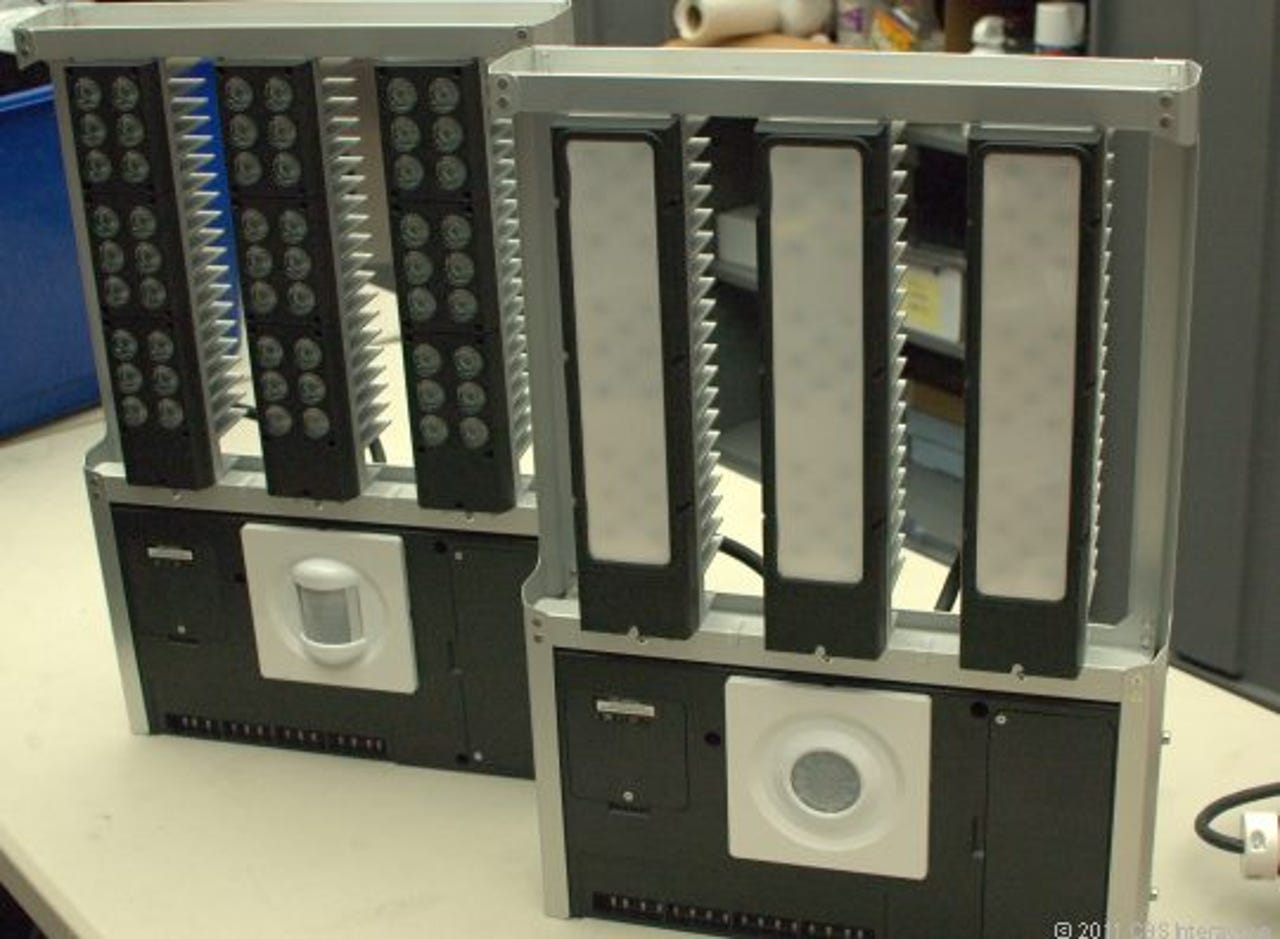Start-up Digital Lumens has developed a commercial light fixture that is smarter than your average LED (light-emitting diode). CNET visited the company in Boston late last week to get a closer look.
The fixture is designed specifically for warehouses and manufacturing facilities where either HID (high-intensity discharge), metal halide, or florescent lamps are used. This fixture consumes about 160 watts, compared to 400 watts for a metal halide light. To improve efficiency further, there is an embedded processor and wireless networking module. The on-board computing power means lights can be scheduled and managed for big gains in efficiency and a payback of two years. There is also an occupancy sensor (white square on the bottom half), but the platform allows for other sensors to be plugged into it.
